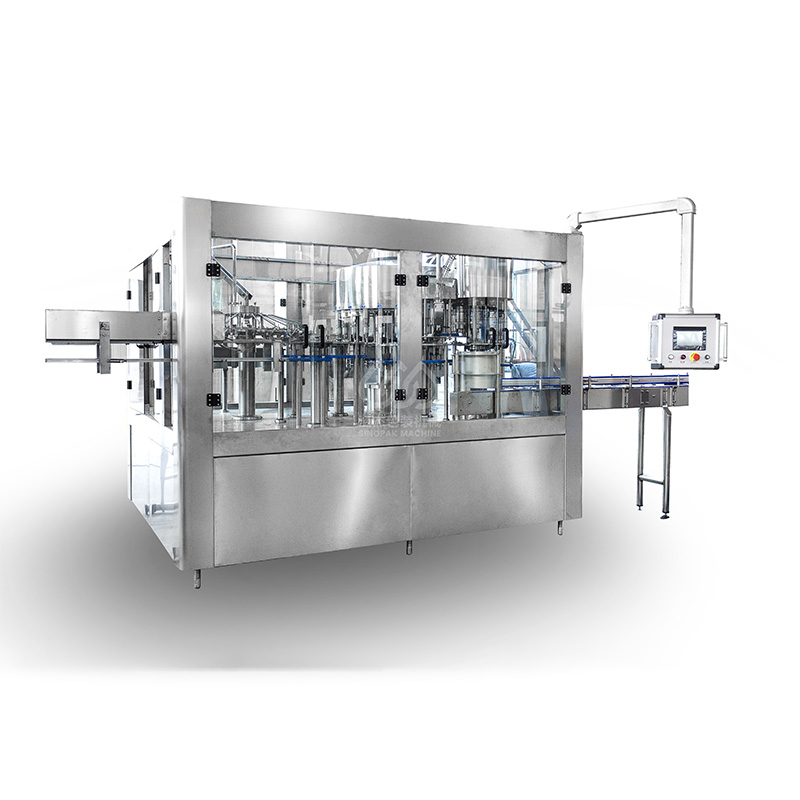Coca-Cola HBC has opened a new high-speed returnable glass bottling (RGB) line to support its efforts toward achieving net zero emissions by 2040.
Coca-Cola HBC, a strategic bottling partner to The Coca-Cola Co., invested €12 million ($12.67 million) in a reusable, refillable, resealable bottle packaging line at its Edelstal, Austria location. The investment was supported by a €4 million ($4.22 million) grant from the Austrian government as part of its fund for beverage companies and retailers to enable a circular economy for packaging. Raw Water Treatment Plant

The new line, which the company says is more water and energy efficient than traditional packaging lines, will produce a new 400-mL returnable and resealable glass bottle for the Austrian market. This is a first across Coca-Cola HBC’s 29 markets and is aimed at the on-the-go market and at-home consumption.
“For some years now, Coca-Cola HBC Austria has been at the forefront of pioneering new sustainable solutions, and we’re delighted that our focus on investment, innovation, and partnerships are helping us to meet our goal of delivering our drinks in more sustainable ways,” says Zoran Bogdanovic, Coca-Cola HBC CEO, of his company’s roadmap to its Net Zero by 2040 goal and contribution to a circular economy for packaging. “Austria is already one of our fastest-growing markets for reusable packaging and this new line will further accelerate this packaging type, which is in demand by our customers and consumers alike. As returnable packaging options offer a reduced carbon footprint, this new line in Austria further supports our Net Zero by 2040 goal. We’re grateful for the partnership with the Austrian Government as we work together towards a common goal of a greener business model and a better environment.”
The company says that the investment is part of Coca-Cola HBC’s Net Zero by 2040 plan, which as the name implies, is a goal to achieve net zero emissions across its entire value chain by 2040. The company says it has already reduced Scope 1, 2 and 3 emissions by 30% in the last twelve years. As packaging accounts for 34% of Scope 3 emissions in Coca-Cola HBC’s total supply chain, it is a key component of the company’s carbon emissions reduction pathway.
The new line significantly expands the range of returnable products in the Coca-Cola HBC portfolio to include Coca-Cola and Coca-Cola Zero Sugar in a 400 mL glass bottle for at-home and on-the-go consumption.
Consumers can also buy Coca-Cola, Coca-Cola Zero Sugar, Fanta Orange, and Sprite in 1-L returnable glass bottles. The universal 1-L bottle design for different sparkling soft drink brands helps simplify production and logistics and reduces the sorting and reverse logistics in the market.
This expansion of returnable packaging is in response to growing consumer demand for returnable packaging solutions in Austria, where 62% of consumers value sustainability when they are selecting products, according to Nielsen Data (LEH incl. H/Lm FY 2019-2022, Europe Customer Story V, Nov 2022).
Expanding this packaging type also helps customers meet quotas for returnable packaging in retail, which are due to be introduced by 2024.
One of the Coca-Cola HBC’s most modern and technologically advanced sites, the production and logistics centre at Edelstal employs about 350 people, and roughly 460 million L of beverages from the comprehensive product portfolio are bottled there each year. Coca-Cola HBC has invested €148 million in the plant since it opened ten years ago, and all the electricity used on the site comes from green and renewable sources. The company says that the new line sets new standards in terms of size and bottling speed: depending on the container size, up to 50,000 bottles/hour–that's almost 14 bottles/second–run off the line on an area of 2,100 m2.

Juice Bottle Packing Machine The new investment in the Edelstal site further supports Coca-Cola HBC’s net zero goals as the new line is more energy efficient. The site was also the first globally to have a Digital Twin made of its production line, built and tested by Microsoft. The Digital Twin creates an accurate digital model of a processing system to ensure that it runs as efficiently as possible. In just 12 weeks of the trial there has been no downtime, and the plant reduced energy usage by 9%. PW